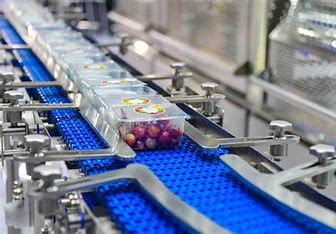Automated box packaging has become an indispensable part of modern manufacturing, significantly impacting production processes and enhancing overall efficiency. This technology utilizes advanced robotics, sensors, and software to streamline packaging tasks, ensuring products are accurately placed, sealed, and labeled. Let’s delve into the specifics of how automation is revolutionizing box packaging.

The Basics of Automated Box Packaging
Automated box packaging systems are designed to handle a wide range of packaging tasks, from feeding and positioning products to sealing and labeling boxes. These systems often incorporate conveyors to transport products through various stages of the packaging process.
At the core of automated packaging are robotic arms, which are programmed to move with precision. These arms can pick up products, place them into boxes, and even seal the boxes using specialized equipment. Advanced sensors and cameras ensure that the robotic arms operate with high accuracy, minimizing the risk of errors.
Software algorithms play a crucial role in automating packaging processes. These algorithms control the movement of robotic arms, monitor the flow of products, and adjust the packaging process in real-time to ensure optimal performance.
The Benefits of Automation
- Increased Efficiency
Automated packaging systems can process a high volume of products in a short period, significantly increasing production capacity. This efficiency allows manufacturers to meet demand more effectively, reducing lead times and improving customer satisfaction.
- Reduced Labor Costs
By automating packaging tasks, manufacturers can reduce their reliance on human labor. This not only reduces labor costs but also minimizes the risk of human error. Automated systems can operate continuously, with minimal downtime, ensuring a consistent flow of packaged products.
- Improved Accuracy
Automated packaging systems incorporate precision sensors and cameras, ensuring that products are accurately placed, sealed, and labeled. This reduces the likelihood of errors, such as mislabeled packages or improperly sealed boxes, enhancing product quality and consumer satisfaction.
- Scalability
Automated packaging systems are scalable, allowing manufacturers to adjust production levels based on demand. This flexibility ensures that manufacturers can maintain optimal production levels, even during peak seasons or unexpected market changes.
The Impact on Manufacturing Processes
Automated box packaging has had a significant impact on manufacturing processes. Manufacturers now have the ability to produce high-quality, consistently packaged products at a lower cost. This has led to increased competition in the market, driving innovation and improvement across the industry.
Moreover, automated packaging systems enable manufacturers to offer personalized packaging options. By incorporating variable data printing and other advanced technologies, manufacturers can create custom packaging that resonates with consumers, enhancing the overall product experience.
Challenges and Future Trends
While automated box packaging offers numerous benefits, there are still challenges to overcome. The high initial investment cost can be a barrier for smaller manufacturers. Additionally, ongoing maintenance and updates are required to keep automated systems running smoothly.
However, the future of automated packaging looks promising. Advancements in artificial intelligence and machine learning are enabling systems to become more intelligent and adaptable. This will lead to even greater efficiency, accuracy, and scalability in packaging processes.
Moreover, the rise of sustainable manufacturing practices is driving innovation in automated packaging. Manufacturers are seeking ways to reduce waste, use eco-friendly materials, and optimize packaging processes to minimize their environmental impact. Automated packaging systems can play a crucial role in achieving these goals by enabling more efficient use of materials and reducing the amount of waste generated during packaging processes.
In conclusion, automated box packaging is a game-changer for modern manufacturing. By streamlining packaging tasks, enhancing efficiency, and reducing costs, automated systems are enabling manufacturers to produce high-quality, consistently packaged products at a lower cost. As technology continues to evolve, automated packaging systems will become even more sophisticated, intelligent, and adaptable, driving further innovation and improvement across the manufacturing industry.


